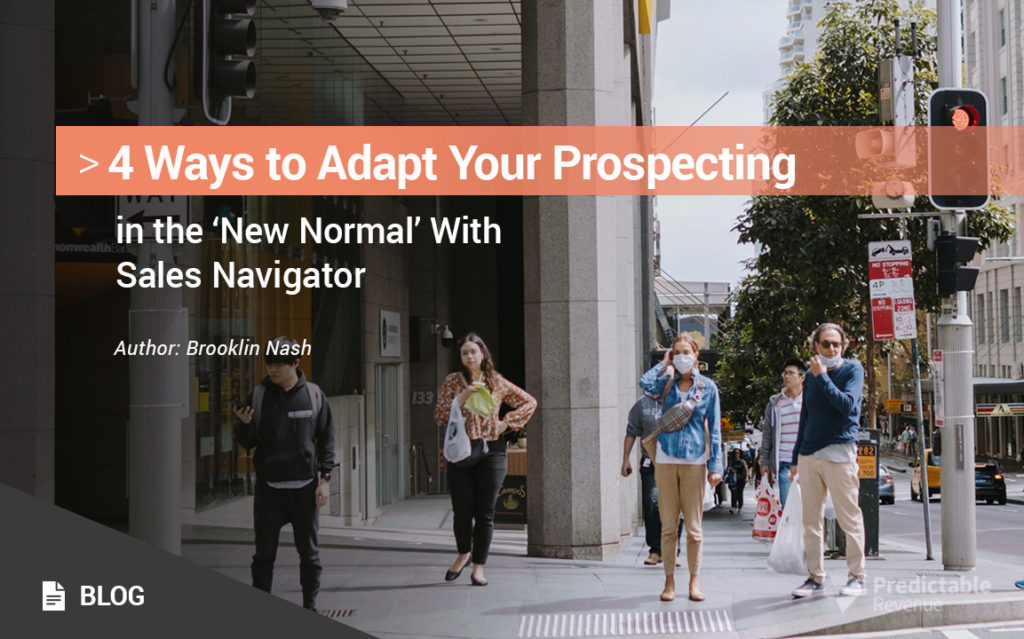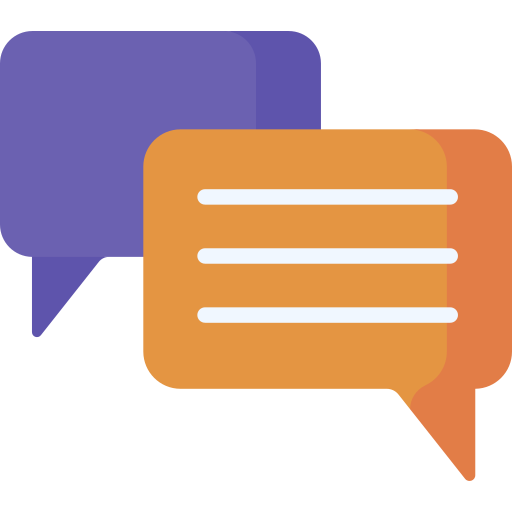4 Ways to Adapt Your Prospecting in the New Normal With Sales Navigator

Author: Brooklin Nash
It wasn’t even 6 months ago when the sales game changed dramatically. Everyone was left scrambling: do we continue selling? To who? How? With what messaging?
Yes, the sales must go on. But simply adding “hope you’re staying healthy and safe” to your intro doesn’t cut it anymore. One of the few reasons decision makers will respond to outreach at this point is if it’s highly relevant. How do you sort through the noise to deliver a relevant message?
Forget messaging for a minute.
Let’s take a step back to the beginning of the sales process: how you source and qualify your leads. Yes, you should’ve already made adjustments to who you’re targeting (now is not the time to make cold calls to hospitality or retail brands). But selling at this stage doesn’t have to only be reactive.
By adjusting your prospecting efforts to the new COVID reality, you can set the foundation for more meaningful interactions before sending a single cold email. These are a handful of ideas that have worked for us using LinkedIn Sales Navigator.
Personal Touch: Job Changes as an Opportunity
At the end of the day, you’re not selling to companies. Yes, the account makes the payment. But people make the decision. Make sure you’re focused on people, particularly in a season where professionals at every stage in their career are facing change. Here are a couple of ideas on that front.
#1: Catch up with people making changes
Plenty of people have changed jobs over the past few months. Whether they’re switching industries or starting their own project after a layoff, the change is something you can use to anchor the conversation. Here’s how:
- Create a new search around a specific target audience. Director of Marketing at IT companies in California.
- Click the “Changed jobs in past 90 days” tab on the search results page.
- Export lead emails with your favorite prospecting tool, or just save to a Sales Nav list.
- Send an introduction email, congratulating them on the new position and asking what their current process is (for whatever problem your product solves).
Searching for the Director of Marketing position in California yields 33k results. Narrowing it to those who recently changed jobs brings it down to 1k leads. A list this size is more manageable for personalization and lends to a better introduction. You can repeat for each state, role and industry you’re targeting.
I recently ran this approach to reach out to SDRs starting at a new company. While it wasn’t aimed at decision makers, I have seen a 12 percent reply rate and an even higher click rate.
#2: Save your current customers as leads
Most decision makers don’t stay at the same company for too long. The average tenure for a VP of Sales is 19 months; for a CMO it’s just over 4 years.
A stakeholder from a current account moving on doesn’t have to spell trouble for your contract; but it can translate into new opportunities. If you can stay on top of these movements, you can contact warm leads at entirely new accounts.
Keeping updated isn’t difficult with Sales Navigator:
- Save all of the stakeholders within your current accounts to a single lead list.
- Watch for alerts from LinkedIn when people change jobs.
After receiving the alert, you can reach out within the month to these pre-warmed leads, mentioning that you’re excited to see them in their new role and company. Better yet, send a gift from Sendoso or Keep Your City Smiling before bringing up introductions or demos.
Social Selling 2.0: Get Creative With Events
In-person events are out the window for the foreseeable future. But that doesn’t mean you have to give up on organic, personal connections altogether.
You may not have all of your swag or a 10×10 booth, but everyone moving to digital platforms can give you some new ways to reach out. And, no, it doesn’t mean you have to create your own virtual event (although that’s a great idea, too).
#1: Use cancelled events to make an introduction
Everyone was looking forward to their event schedule in 2020. But then all events — B2B included — were cancelled. Instead of writing this off as a missed opportunity, use these cancelled events to make an initial connection anyway.
Gartner’s Marketing Symposium, for example, was recently rescheduled to the end of this year. Instead of just waiting 6 more months and blending in with the crowd, you can stand out by reaching out now. Gartner has a list of exhibitors and sponsors — use this as the foundation for a dedicated list in LinkedIn Sales Navigator.
Rinse and repeat for all the events you were planning on attending this year (or bigger events you weren’t planning on attending).
Armed with this list, you can start creating personalized, relevant cold emails to your target accounts. Instead of pitching hard, treat this email as a digital introduction.
For example:
“I was looking forward to meeting your team at the Marketing Symposium this year. Instead of waiting until December, interested in getting on a call this week?”
#2: Social selling with virtual events
Make good use (again) of the ability to save leads to dedicated lists on Sales Nav. You can amplify the impact of virtual events by keep track of who you meet, chat with and see on these calls.
At Predictable Revenue’s Own Your Growth virtual conference, for example, I immediately sent a connection request to the people on the same sessions. But, instead of stopping there, I also added those that fit our ICP to a dedicated list on Sales Nav.
Now I have a list of prospects I’ve already connected with, warmed for outreach in another month. In this case, I can make the follow up even more natural.
For example:
“Have you given any more thought to the Own Your Growth session on prospecting? I’d love to hear more about your process if you’re interested.”
Don’t sell hard at this stage, especially if you’re targeting businesses affected by COVID-19. Instead, just use this stage to build the foundation. If you’ve focused on your ICP in both of these steps, conversation around your solution should pop up organically.
If you’re looking to get your sales team back on track this summer, we can help!
Brooklin Nash is Head of Content at Wiza.co. With seven years of B2B SaaS content marketing experience, Brooklin heads up all marketing efforts for Wiza and runs a content agency with his wife, Becca. He currently lives in Guatemala.
Experience and a lot of testing have shown us that it is possible to create email templates that people actually resonate with.
You don’t have to figure it out alone, whether you’re starting off as a sales representative, looking to improve your game or providing your team with expert advice, we have your back!
